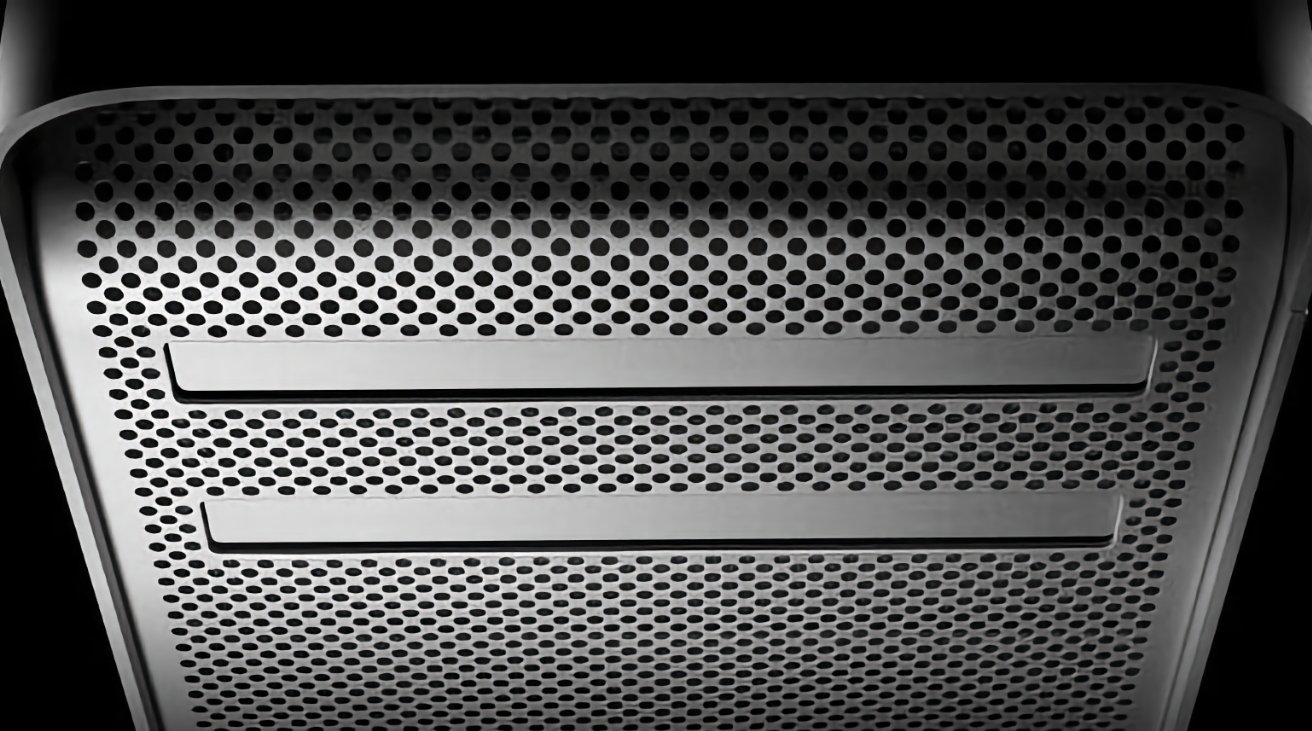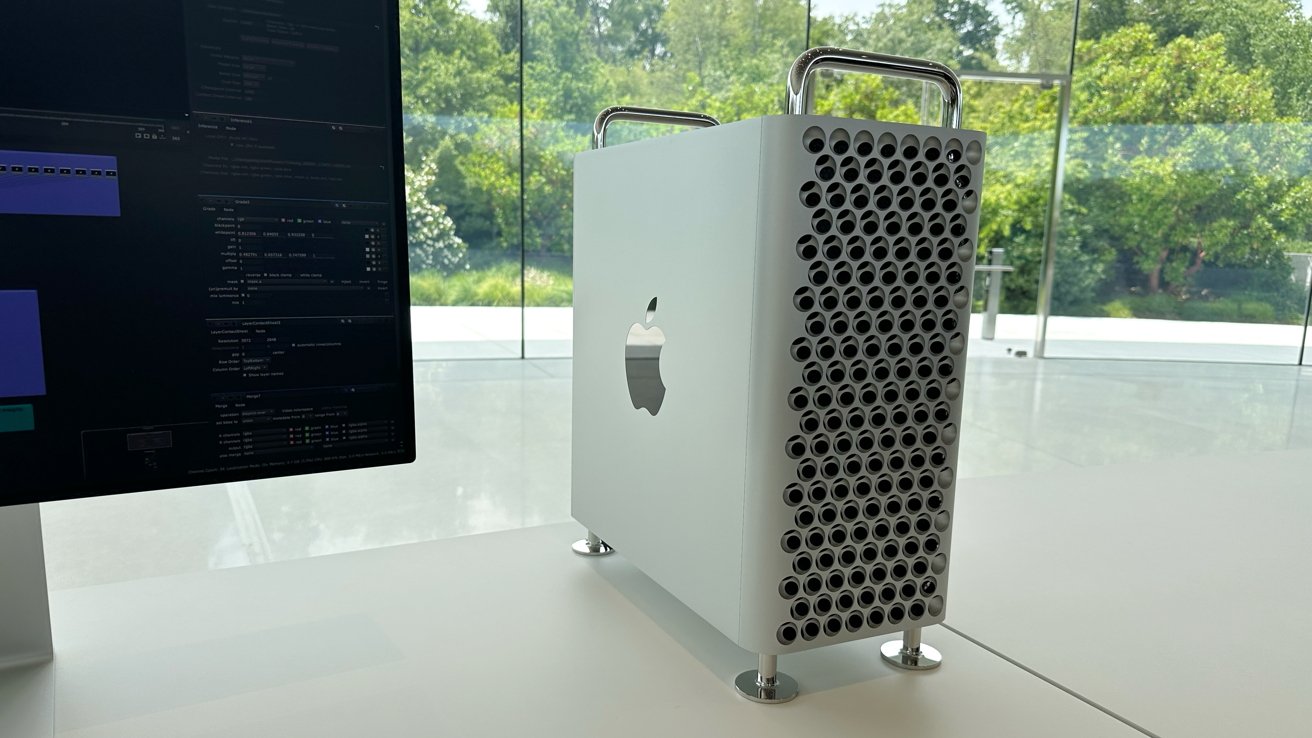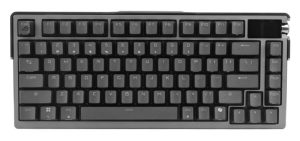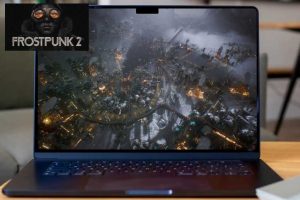
Article Hero Image 
Last updated 18 hours ago
The original Mac Pro was launched in August 2006 — and it’s still remembered as a high point in Apple history. AppleInsider celebrates the old favorite workhorse — and its rather varied sequels.
The latest Mac Pro, launched in 2023, was the final Mac to make the transition from Intel processors to Apple Silicon. But it was when Apple made its previous huge transition, the move from PowerPC to Intel, that the original Mac Pro first came out.
But just as with Apple Silicon, the transition to a new processor took longer for what would become the Mac Pro than users may have hoped.
Intel promised unimaginable speed
Two years before the Mac Pro launch, on June 6, 2005, Steve Jobs formally revealed that the long-standing rumor was true, Apple was switching to Intel processors for the Mac. That year he detailed the company’s roadmap.
“Starting next year, we will begin introducing Macs with Intel processors in them,” he said at WWDC 2005. “So when we meet again this time next year, our plan is to be shipping Macs with Intel processors by then.”
“And when we meet here again two years from now, our plan is that the transition will be mostly complete,” he continued. “And we think it will be complete by the end of 2007. So this is a two-year transition.”
That’s as clear as Apple ever gets, and if Jobs’s explanation of the transition sounds familiar, it should. Tim Cook followed exactly the same playbook when announcing the move to Apple Silicon.
The big news was that every Mac in the range was to have an Intel processor, and that was obviously good, but Jobs was specifically promising faster and more powerful machines. And the place where power was wanted most was what would become the Mac Pro.
We didn’t know that name at the start of the Intel transition, but we did know its form as there was already a top-of-the-line PowerPC model called the Power Mac G5 that came in the same chassis.
And one of the reasons Jobs gave for moving from PowerPC to Intel was explicitly to do with that machine and its development. Standing in front of a slide showing a PowerMac G5 with the words “3.0GHz?” Jobs had a lot to say.
“I stood up here two years ago and I promised you this,” said Jobs, pointing at the screen. “And we haven’t been able to deliver that to you yet.”
“As we look ahead, we can envision some amazing products we want to build for you,” he continued, “and we don’t know how to build them with the future PowerPC roadmap.”
The Power Mac G5 was popular because it was the most powerful Mac of its time, but it takes something more indefinable than performance to create a hit and this machine simply never had the sheer love that the Mac Pro would get.
So although there were plenty of hopes and expectations, it wasn’t until 1:08 PM eastern time on Monday, August 7, 2006, that the Mac Pro was released and started on the road to becoming a beloved classic.
“In the first two quarters [of 2006], we transitioned almost all of our product over to Intel. Except for one, and that is the Power Mac,” Jobs declared then. “Well, today the Power Mac is going to fade into history.”
Perhaps that doesn’t seem as surprising today when it took a generation of Apple Silicon Macs before they shed the chassis of their predecessors. But back in 2006, the sight of the same large aluminum casing, the same handles for carrying it, and the same ease of access to the insides, it was a surprise.
It was enough of a surprise that Schiller was quick to defend it.
“We have the best enclosure in the business, this is a beautiful enclosure design,” he said. “On the outside, it has all the benefits as before. Inside, it’s entirely new.”
Performance promise
This first Mac Pro did reach Jobs’s promised 3.0GHz performance, and it did so with Intel’s Xeon processor.
“This is the Mac that so many of our highest-end customers have dreamed of,” said Schiller. “For our highest-end customers, a feature they’ve really wanted: they’re 64-bit.”
“So this new Intel Xeon chip is an amazing processor to put into our products, but in every Mac Pro we’re going to put two of them,” he continued. “All Mac Pros, quad Xeon performance. These are screaming-fast machines.”
It seems as if every new Mac is the fastest Mac Apple has ever made, but this one gave a huge leap with a claimed doubling of performance over the Power Mac G5. Perhaps not until the introduction of Apple Silicon was there such a significant boost in speed.
This Mac Pro also boosted what that performance was per watt of power. Typically that’s a concern when you’re building notebooks and you’re balancing the needs of work and battery life, but Schiller pointed out that it also had great benefits with this desktop.
“Performance per watt means we need less cooling systems inside the box too. Which means we can do more with the space we have,” he said. “So we’ve doubled the number of drives inside the Mac Pro to now four hard drives of up to 2TB of internal storage.”
There was also now a second optical drive, plus space to connect more external devices both at the back of the machine — and now the front, too.
The front added a second USB 2.0 port and Firewire 800, while the back’s most significant change was a double-wide graphics slot allowing for the biggest and most powerful GPUs to be installed without sacrificing an adjacent slot.
So the new Mac Pro was “screaming fast,” and it came with greater expansion but still the same enviably easy way of doing that expansion. The enclosure let you simply open the whole side and then just snap in new hard drives without any cabling or fiddling at all.
This Mac Pro was deeply customizable, it came with 1GB of RAM but could address 32GB of RAM, and Schiller announced that it was shipping right now.
On August 7, 2006, you could buy one for $2,499. In 2023’s money, that’s approximately $3,894, or just about half the cost of a present day Mac Pro.
Not standing still
This original Mac Pro — version 1,1 — stayed on sale until a speed bump in April 2007. Then version 2,1 lasted until the following January when the 3,1 edition upped the performance with a faster quad-core Intel Xeon 5400 processor. You could also upgrade this one to have two such processors plus up to 32GB RAM.
Another significant update was in July 2010 when, as well as moving to Intel’s Xeon 5600-series processors, you could now have up to 64GB RAM and 8TB storage.
This edition lasted as Apple’s flagship model until arguably that flag was faltering. It was two years before the Mac Pro saw another update and the July 2012 release now came with two 6-core 2.4 GHz Intel Xeon Westmere-EP processors.
On the outside, it still looked exactly the same, which was fine, but by now the insides were now looking old, too. It was being updated, but the interior was no longer improving radically, and so Apple’s professional users began complaining.
It looked then as if Apple was losing interest in its professional users. It looked as if Apple might even have lost its famed ability to produce innovative new Macs.
The difficult second album
It’s hard to top a success, even in technology where devices are developing fast. With the cheesegrater Mac Pro then several years old, Apple could — and needed to — revamp it totally to take benefit of newer technology.
That’s exactly what Apple did, and initially, it seemed that this revamped new Mac Pro was remarkable. It didn’t stay that way, but at WWDC 2013, when Apple gave a sneak peek, we all applauded Phil Schiller’s line, “Can’t innovate, my ass.”
However, unlike with the cheesegrater Mac Pro, he couldn’t do that particular type of reveal that used to be a staple of Apple launches. He couldn’t just casually say that the new Mac Pro was shipping today.
Instead, Schiller revealed that it would be shipping later that year — and it did, but just barely, on December 19, 2013. That was over six months later than the announcement.
This 2013 Mac Pro was the first in almost a decade that didn’t come in the same “beautiful enclosure” that had lasted since the Power Mac G5 in June 2004.
It was a new enclosure and it definitely still looked beautiful, plus it was nothing short of startling to see its diminutive form next to its predecessor. The 2013 Mac Pro was 9.9 inches tall where the cheesegrater model was just over double that at 20.1 inches.
The cheesegrater model was also 8.1 inches wide by 18.7 inches deep while the new model was round with a diameter of 6.6 inches. So whatever the percentage differences, the effect was that the 2013 Mac Pro looked like a tiny trash basket in comparison.
It was small and it was impressive — and unfortunately it was flawed.
While professional users had immediately been critical of its lack of expandability and modularity, over time it became clear that there was a fundamental weakness.
That very impressive new design broke down under load because of its “thermal corner.” There was a limit to how fast it could run because its ventilation was inadequate.
This became apparent but at launch, the first reviews were all very positive, even as they did complain about the 2013 Mac Pro’s lack of options for upgrades.
With these performance bottlenecks, though, the 2013 Mac Pro was not the real successor to the 2006 Mac Pro that people had wanted. Even though it really did look great.
The 2013 Mac Pro cost from $2,999 at launch ($4,045 today), and in hindsight, it was a failure – but only in hindsight. If it didn’t become the absolute favorite that the 2006 Mac Pro had been, it still had its fans — no ventilation pun intended — and video editing suites came to rely on it.
Apple took its eye off the ball
We’ll never really know how Apple saw the Mac Pro in the remainder of the Intel days, but it was never going to become the insane best seller that, say, the iPhone is. And very soon after launch, there were even signs that Apple had rather forgotten the 2013 Mac Pro.
For instance, it saw no update at all in 2014.
It wasn’t actually until 2017 that Apple did anything about that cylindrical Mac Pro — and then it was to announce its death.
Apple would actually continue to stock that same, identical Mac Pro up into 2019, but it was an increasingly tough sell as it had the same problems it always had, and now it wasn’t aging well. Plus Apple had taken the then practically unheard step of publicly promising that a radically improved Mac Pro was coming.
As a stopgap, Apple also brought out the iMac Pro in 2017. For many users, the iMac Pro went successfully toe to toe with the 2013 Mac Pro, just as today the Mac Studio and Mac Pro are evenly matched.
Apple didn’t say it would be such a long wait from the 2017 news to the 2019 reveal, but the one thing the company was clear about was that the new Mac Pro would not come out in 2017.
Only, such was the eagerness for the new machine that countless articles chose to interpret that as meaning it would definitely be out in 2018. It truly was a case of wishful disregarding of an unusually plain Apple statement.
Promised or even just rumored new Apple devices always get attention, but the Mac Pro audience has always been a passionate one. It’s doubtlessly a much smaller audience than for any other Mac, but it’s also the audience where although cost is a factor, it’s far from being the only consideration.
Instead, this is an audience where the benefits of a truly powerful Mac Pro will pay off. Even a high purchase price will soon be the best choice economically, with the significantly faster workflows and significantly faster turning around of computationally-heavy tasks that a Mac Pro brings.
Whether Apple really forgot this professional audience or not, it definitely learned from the 2013 Mac Pro that this audience is not cost-conscious but benefit-hungry.
There are limits to how much users will spend, though, and when it brought out the 2019 Mac Pro, Apple was pushing it.
Mac Pro 2019
At launch on December 10, 2019, the 2019 Mac Pro started at $5,999 and went way, way up. A maxed-out version would cost you $53,000 — ($65,000 today) and that was without a display.
The target audience wasn’t fatally concerned about the price — again, they weren’t ecstatic about it, but in their use case it was a worthwhile investment. But just about everyone mocked how Apple would also sell you a set of Mac Pro wheels for $699.
Still, it seemed at the time that was in fact the perfect Mac Pro. Perhaps it could even have taken over the mantle of the beloved favorite like the original Mac Pro from 2006, but it didn’t.
For six months and 12 days later in June 2020, Apple announced the transition to Apple Silicon. Once again, the promise was of greatly improved performance, even if no details were revealed.
Then we started to get details and they were pretty much all that Apple claimed. It wasn’t quite the same as when the 2017 iMac Pro could often beat the then-current Mac Pro, but the first Apple Silicon was just a little Mac mini and it was a startling leap forward.
Apple Silicon was clearly working, it was radically improving performance, and it was doing it at a far lower cost than a 2019 Intel Mac Pro.
It was enough that you would have had to have a very, very good use case — or have someone else paying the money — to make buying the 2019 Mac Pro the right choice.
You can’t postpone your work while waiting for Apple, so there were still people for whom it was a sensible if expensive buy. But sales must surely have dropped, especially when it was certain the Mac Pro would be the pinnacle of Apple Silicon, and when it was probable it was coming soon.

Completing the transition to Apple Silicon
It seems churlish to point this out when Apple has successfully pulled off an astounding complex transition from Intel to Apple Silicon, but it didn’t make its own deadline. Tim Cook said it would take two years, and every Mac did make that transition — except the Mac Pro.
Instead, it took three years for the announcement of a new Mac Pro.
And this was a different Mac Pro in more ways than its processor. Where the original 2006 model took some time to become a classic, it’s deeply unlikely that the 2023 edition will.
It’s a fine Mac, it is officially the top of the range, but in the three years it took to transition to Apple Silicon, every other Mac got there first — and that includes a brand-new one. The Mac Studio came out in 2022 as the first entirely new Mac in years, and then it was updated in 2023, right alongside the launch of the Mac Pro.
The Mac Studio is like an extruded Mac mini in that it has the same base and just a taller chassis. No one expects the Mac Studio to be very expandable, so the fact that it comes with many ports — and that they are well-positioned to be easily accessible — is a bonus.
Whereas the Apple Silicon Mac Pro may boast modularity, may come in a chassis that allows for expansion cards, but there are severe limits on what those cards can be.
And the killer fact that will surely stop the new Mac Pro becoming beloved is that it doesn’t outperform the new Mac Studio.
Back to the future
That original 2006 Mac Pro was the right combination of power, features, and upgradeability. The 2013 version ditched the upgradeable side, and then the 2019 version brought it back.
The Apple Silicon Mac Pro comes somewhere in the middle for modularity and expandability.
It does also come in at a far lower price than before, though. Where it was quite simple to buy a 2019 Mac Pro configuration that cost over $50,000, a maxed-out 2024 Apple Silicon Mac Pro is around $12,350.
So it could be popular with its intended audience as it does represent much more performance at a vastly lower price. It’s just that the Mac Studio matches that performance and is significantly cheaper.
It’s possible, then, that the original cheesegrater Mac Pro may be an example of catching lightning in a bottle.




